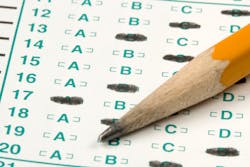Test your labor and history knowledge with this Labor Day quiz from Maine labor activist and scholar Pete Kellman.
Kellman compiled this labor quiz while researching, "Building Unions: Past, Present and Future," a handbook he wrote for the Program on Corporations, Law and Democracy (POCLAD).
"I could hardly believe some of these nuggets I uncovered doing my research," Kellman said. "We sure never learned these in history class. I think this quiz will resonate with any working person, whether in a union or not."
Quiz:
- In the United States, it is easy for citizens to form a corporation but difficult to form a union. Name three countries where workers can form a union as easily as investors can form a corporation in the United States.
- In 1770, what percentage of the colonial population lived in slavery?
- At the time of the War of Independence, what percentage of the people who made up the colonies of Pennsylvania, Maryland and Virginia were or had been indentured servants?
- Who was the richest man in America at the time of the Revolution?
- What percent of "We the People" could vote in 1776?
- Who said, "The people who own the country ought to govern it"?
- What great American document was written behind closed doors in a meeting held in 1787, the minutes of which were not made public until 53 years later?
- What were the demands of the Labor Movement in 1830?
- The 14th Amendment to the Constitution was passed in 1868 to extend due process and equal protection to African Americans. In the first 50 years after its adoption, what percentage of cases brought under it were on behalf of African Americans, and what percentage on behalf of corporations?
- The Supreme Court ruled in 1872 that women do not have the right to vote under the 14th Amendment. What year did the Supreme Court rule, "Corporations are persons within the meaning of the Fourteenth Amendment to the Constitution of the United States"?
- How can five people amend the Constitution?
- Whose election to the presidency of the United States was determined by a special commission that was controlled by the CEO of the Pennsylvania Railroad and made up of Supreme Court justices and members of Congress? When did that President pull the last Federal troops from the South, effectively ending Reconstruction and using those troops to put down the first national labor strike in the United States in which over 100 strikers were killed?
- In 1886, the largest labor organization in the United States was the Knights of Labor. What issues did it advocate?
Answers:
- Sweden, Germany, Italy, Japan, Ireland and more.
- 20%
- 75%
- George Washington
- 10%
- John Jay, First Chief Justice of the Supreme Court
- The Constitution
- The 10-hour day and public education
- African Americans: one-half of 1%. Corporations: 50%.
- 1886
- By becoming U.S. Supreme Court Justices
- Rutherford B. Hayes, 1877
- The creation of producer, consumer and distributive cooperatives; prohibition of child labor; equal pay for equal work between the sexes and races; universal suffrage; and the eight-hour day. They believed that when a few people controlled most of the wealth they would use their economic power politically to prevent the creation of a real democracy.
About the Author

Sandy Smith
Sandy Smith is the former content director of EHS Today, and is currently the EHSQ content & community lead at Intelex Technologies Inc. She has written about occupational safety and health and environmental issues since 1990.
